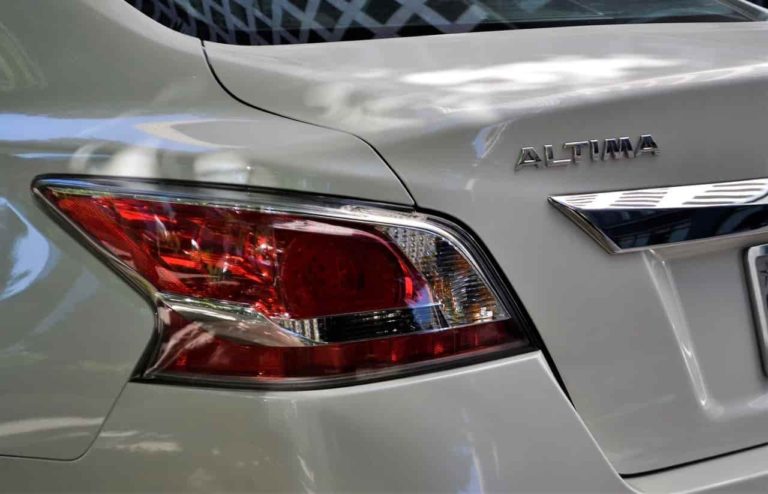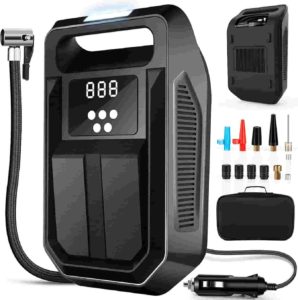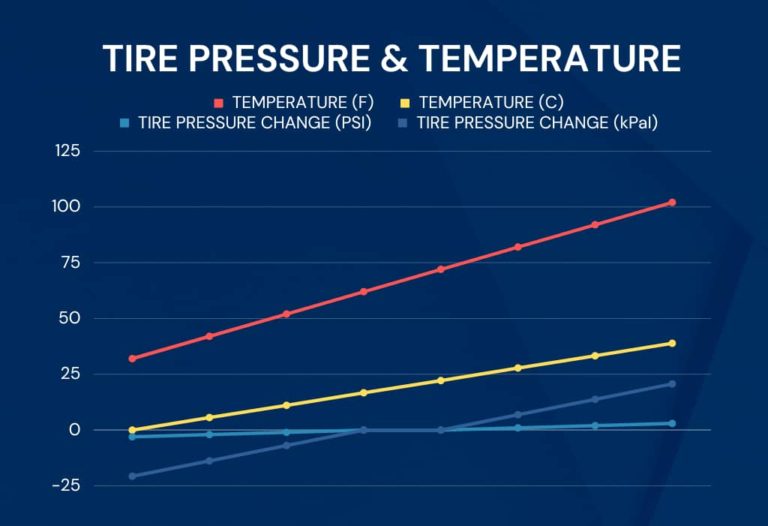What is TPMS in the Nissan Altima?
Ever had that ‘Oh no, not again!’ moment when the tire pressure light blinks on your dashboard? Well, it’s time to appreciate that little light! In your Nissan Altima, this is the work of the Tire Pressure Monitoring System (TPMS), a guardian angel of sorts for your vehicle. This feature keeps an eye on the pressure in all four tires, ensuring they’re neither over nor under-inflated. The TPMS is all about safety, performance, and efficiency. It’s the silent custodian of your vehicle’s handling and braking prowess, making sure they’re never compromised. So, the next time that light flickers, remember – it’s your TPMS, contributing to a safer, smoother, and more efficient driving experience! In this article we will explain how to reset your low tire light, how your TPMS works, and why your tire light is on!
Steps to Reset Nissan Altima Tire Pressure Light
The Nissan Altima does not have a tire pressure reset button.
Park the vehicle in a safe place and turn the engine off.
Adjust the tire pressure in all four tires to the recommended COLD tire pressure, 32 or 33 Psi depending on tire sizes. (check chart above)
After adjusting the tire pressure, drive the vehicle at speeds above 16 MPH (25 km/h). The low tire pressure warning light does not automatically turn off when the tire pressure is adjusted. After the vehicle speed reaches 16 MPH (25 km/h), the light will turn off.
If the low tire pressure warning light flashes for approximately 1 minute and then remains on after you turn the ignition switch to the ON position, the TPMS is not functioning properly. (read more about TPMS malfunction below)
If the light doesn’t go off right away, re-check your tire pressure to make sure they are all at the exact pressure you set them to. If the pressure has decreased, you probably have some sort of leak in that tire.
If your tires are not losing air and the tire light still won’t go out, try overfilling your tires by about 10 Psi. So, fill them to 43 Psi and then drive the car for a few minutes. The tire light should reset. Remember: DO NOT leave the tires at this level, release the extra 10 Psi afterwards.
NOTE: The tire pressure monitoring system (TPMS) will not turn off the low tire pressure warning light until the tire pressure is set to the recommended pressure and the vehicle is driven at speeds above 16 MPH (25 km/h). If you’ve completed these steps and the tire light STILL won’t go out, There is only one of three things that can be the problem. Either have a faulty tire pressure sensor in one of your wheels OR you have a leak OR your receiver module (control unit) is not communicating with your sensors (this is the least of all likely and is rare).
2023 Nissan Altima Tire Pressure
TIRE SIZE | FRONT PSI | REAR PSI |
215/60R16 | 32 | 32 |
215/55R17 | 33 | 33 |
235/40R19 | 33 | 33 |
SPARE TIRE | 60 | 60 |
Nissan Altima Tire Settings
How to Reset Tire Maintenance Light
Apply the parking brake.
Turn the ignition switch to the ON position, but do not start the engine.
Use the steering wheel switches to select the “Settings” menu on the vehicle information display.
Select “Vehicle Settings“, then “Tire“.
Select “Tire Maintenance“, then “Reset“.
Press the OK button to reset the tire maintenance reminder.
How to Change Tire Pressure Units
Press the “MENU” button on the control panel to display the “Settings” screen.
Use the multi-directional control to select “Vehicle Settings“.
Then select “Tire“.
Now, select “Pressure Unit“.
You can now choose between “kPa” and “psi” as your preferred unit of measurement for tire pressure.
How Does the Nissan Altima TPMS Work?
The tire pressure monitoring system (TPMS) in the Nissan Altima is a safety system designed to alert the driver when the pressure in one or more of the vehicle’s tires is significantly under-inflated. Here’s a detailed explanation of how it works:
Sensors: Each tire, including the spare tire (in some models), has a sensor attached to the valve stem inside the tire that constantly measures the pressure in the tire. These sensors are battery-powered and transmit data wirelessly.
Data Transmission: The sensors transmit the tire pressure data to a central receiver in the vehicle, typically every few seconds while the vehicle is in motion. If the vehicle is stationary, the sensors transmit data every few minutes to conserve battery life.
Warning Light: If the system detects that the pressure in one or more tires is 20%-25% or more below the manufacturer’s recommended pressure, the TPMS warning light (a yellow exclamation point inside a tire) on the dashboard will illuminate. This is an indication to the driver that one or more tires are significantly under-inflated and need attention.
Tire Pressure Display: The Nissan Altima also has a tire pressure display that shows the pressure in each tire. This can be accessed through the vehicle’s information display.
Tire Maintenance Reminder: The TPMS also includes a tire maintenance reminder that alerts the driver when it’s time to rotate the tires or when there are other tire-related maintenance issues. This reminder can be reset through the vehicle’s information display.
What is the TPMS Malfunction Indicator?
The Nissan Altima’s tire pressure monitoring system also has a malfunction indicator to alert you when something is wrong with the system itself. The indicator uses the same yellow exclamation point as the low tire pressure light. The difference is that, if there is a problem with the system, the light will flash for approximately 60 seconds before staying on. This flashing or blinking will happen every time you start your Altima until the issue is resolved. When your tire light is flashing your Altima will not be able to give you accurate pressure readings. Basically, a blinking tire pressure light means there is a malfunction within the TPMS itself, rather than an air pressure issue. This is usually due to a faulty pressure sensor in one of your tires (a dead battery) or driving with the spare tire. (if the spare doesn’t have a sensor in it) To figure out which sensor is malfunctioning or faulty, use a TPMS diagnostic tool and scan each sensor for diagnostic information or bring your car to a professional.
What Will Cause the TPMS to Not Work Properly?
Using non Nissan wheels or tires.
Electronic devices that operate on similar radio frequencies can interfere with the Tire Pressure Monitoring System (TPMS), causing it to malfunction. This interference can come from a wide range of sources, including something as basic as a radio or the alarm system of a neighboring shop.
Should your Altima’s windows have a high degree of tinting, it may potentially disrupt the radio signals being exchanged between the TPMS sensors and the receiver.
In the event of substantial snow or ice accumulation on or surrounding the tire valves
If the tire pressure is extremely high.
If wheels without tire pressure sensors are installed on the car.
If new tire pressure sensors are installed without registering the new sensor IDs with the Altima’s receiver module/ECU.
What Causes the Tire Light to Turn On?
Seasonal temperature changes: A drop in ambient temperature can cause tire pressure to decrease, triggering the warning light.
Tire puncture or leak: A sharp object or road debris like a nail or screw may puncture a tire, causing air loss which will of course activate the warning light.
Faulty tire pressure sensor: Damaged or malfunctioning sensors may provide inaccurate readings, resulting in a false alert. The only way to determine which sensor is faulty is to scan each sensor with a TPMS diagnostic tool.
Spare Tire: Driving with the spare tire or donut on your Altima will make your tire light turn on.
Valve stem issues: A damaged or leaking valve stem can lead to gradual pressure loss and eventual activation of the tire pressure light. They make kits to replace the rubber gasket that usually goes bad.
Tire damage: Impact from potholes or hitting a curb can cause structural damage like tire bubbles, leading to pressure loss.
Sensor battery life: TPMS sensors are battery-powered, and over time, batteries die. (they usually last anywhere from 5-10 years) This will cause the tire pressure light to turn on. Again, you must use a diagnostic tool to determine which sensor is dead or dying.
Recent tire rotation or replacement: If the tires have been recently rotated or replaced, the TPMS may need recalibration to avoid false alerts. Sometimes the vehicle’s computer may think the front tires are in the rear and rear in the front after a rotation.
Wheel or rim issues: Damaged, corroded, or cracked wheels or rims can lead to air leaks and pressure loss. This is very common with low profile tires.
Altitude changes: Climbing or descending in elevation can affect tire pressure and trigger the TPMS warning. An additional 1.5 Psi per Km above sea level is required.
Natural pressure loss: Tires lose air pressure over time due to temperature changes and permeation. Tire dry-rot will happen to tires that sit.
Electrical problems or software issues within the car’s TPMS system. Occasionally the system may have a software update from Nissan.
Snow Tires: If you have a separate pair of wheels/rims for your snow tires, you can either transfer the sensors from your summer wheels or acquire an additional set of 4 sensors for the second pair of wheels/rims. However, if you are using the same wheels for both sets of tires, there is no need to be concerned about this.
What Happens When Your Tires are Underinflated or Overinflated?
When tires are underinflated or overinflated in your Nissan Altima, several issues can arise:
Underinflated Tires
Decreased fuel efficiency due to increased rolling resistance.
Uneven tire wear, particularly on the edges of the tread, reducing tire lifespan.
Compromised handling and stability, especially during cornering and emergency maneuvers.
Increased braking distances, affecting the vehicle’s ability to stop quickly and safely.
Higher risk of tire failure, which can lead to accidents or blowouts.
Overinflated Tires
Harsh and uncomfortable ride due to reduced shock absorption.
Center tread wear that occurs faster, reducing traction and handling performance.
Decreased braking performance, potentially extending stopping distances.
Increased risk of tire blowout, especially when driving over potholes or road hazards.
Compromised tire integrity and safety, increasing the likelihood of tire failure.
Does Weather Affect Tire Pressure?
Weather plays a significant role in affecting tire pressure in your Nissan Altima. As temperatures fluctuate, tire pressure will change accordingly. In colder weather the air inside your tires contracts, leading to a decrease in tire pressure. This will result in underinflated tires and will set off your tire pressure light. In hotter weather the air inside your tires expands, causing an increase in tire pressure. A general guideline states that for every 10-degree Fahrenheit change in temperature, tire pressure will decrease or increase by approximately 1 psi in the same direction.
How to Adjust Tire Pressure:
Make sure the tires are cold. If your vehicle has been driven, wait at least three hours before checking the tire pressure.
Remove the valve cap from the tire.
Press the tip of the tire pressure gauge onto the valve and read the pressure.
If the tire pressure is below the recommended level, fill the tire with air until the recommended pressure is reached. If the tire pressure is above the recommended level, release air until it reaches the recommended pressure. (Press the metal stem in the center of the tire valve. You can use any object like a screwdriver to do this. Be gentle.)
After adjusting the tire pressure, don’t forget to put the valve caps back on to prevent leaks and keep dirt and moisture out.
Repeat this process for each tire, including the spare if applicable.
When Should You Adjust Your Tire Pressure?
To get an accurate tire pressure reading on your Nissan Altima, check it when your car has been sitting for a while, preferably in the morning. This is known as checking the “cold pressure” after the vehicle has been stationary for about three hours. When you drive, your tires warm up, causing the air inside to expand, resulting in inaccurate high pressure readings. So, don’t adjust the tire pressure right after driving, you’ll end up with overinflated tires!
Conclusion
In conclusion, the tire pressure monitoring system (TPMS) in your Nissan Altima is a crucial feature designed to ensure your safety on the road. It continually monitors your tires’ pressure levels, helping to maintain optimal performance and efficiency. Understanding how to interact with this system, from resetting the tire pressure light to adjusting your tire pressure, will help ensure your driving experience is both safe and comfortable. Weather, driving habits, and tire conditions all influence your tire pressure, making regular checks and adjustments essential. So next time your tire pressure light illuminates, remember, it’s your Altima caring for you. Take a moment to appreciate the technology, and more importantly, take immediate action for a safer journey ahead. Everything in this article is applicable to all Nissan Altima models and trims. Including Altima FWD & AWD, Altima S, Altima SV, Altima SR, Altima SL, and Altima SR-VC Turbo .






